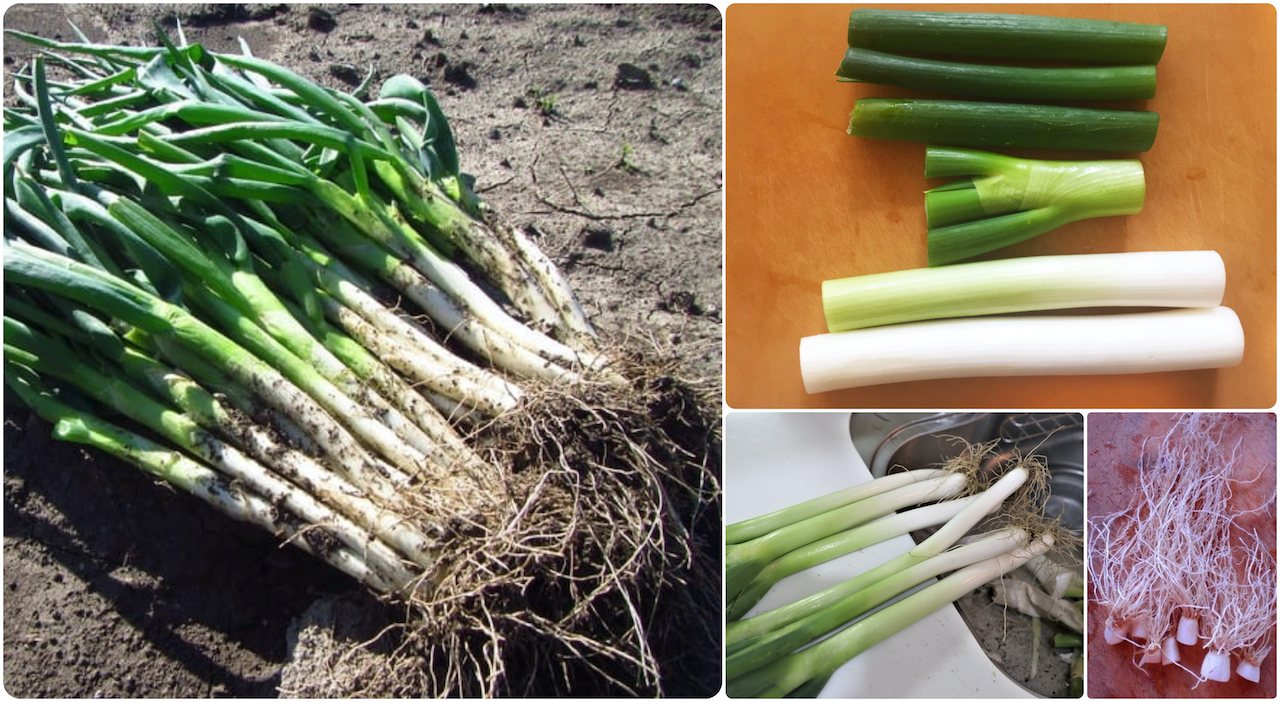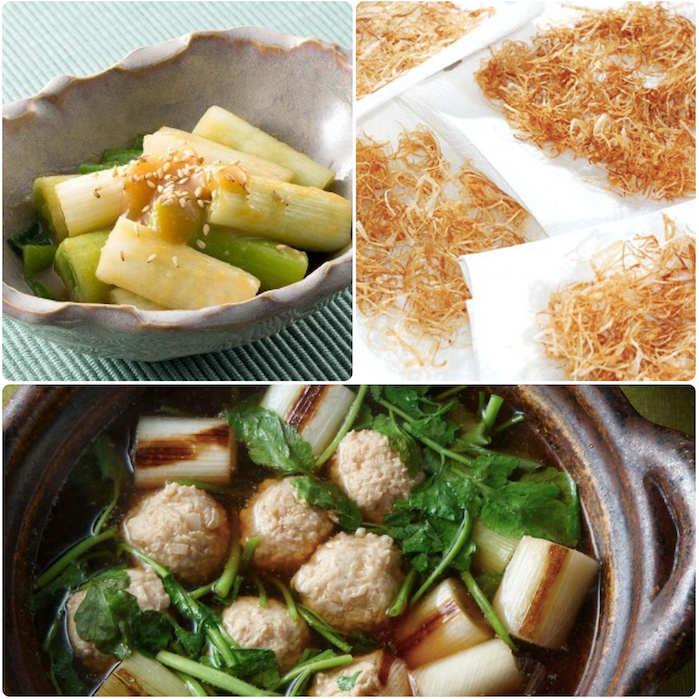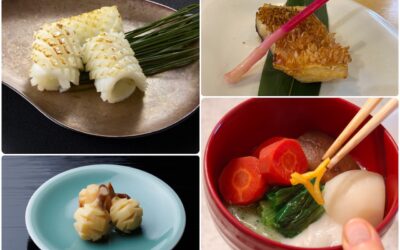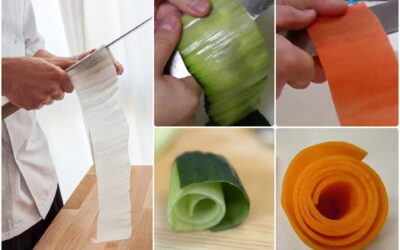
NAGA NEGI・長葱
Indispensible in nabé (hot pot) cookery, as a condiment and in soups all parts of naga negi (Allium fistulosum) are edible. Plan from the start to use the plant fully.
If your naga negi have roots attached, wash them thoroughly to remove all the dirt that clings to them. Slice off the very bottom and set these roots, called higé (“whiskers”), to dry. Dusted in cornstarch and deep fried they become an onion-y, crunchy nibble or garnish for salads and soups (also nice added to grilled cheese sandwiches).
Next, divvy up the stalks into 3 parts: the thick white stalk, the green blades, and the mid-section where the blades diverge from the stalk. Save any scraps and bruised green tops to enrich stock or to infuse oil and/or vinegar.

Enjoying Naga Negi Various Ways
Slice the white stalk into 1-inch (2.5 cm) lengths and skillet-sear to enjoy on their own or add to hot pot nabe. Download a recipe for: YAKI NAGA NEGI no TSUMIRÉ NABÉ ( Seared Japanese Leeks & Chicken Ball Hot Pot 焼き長ネギのつみれ鍋)
Both white and green parts of naga negi are briefly blanched, then sauced in a dish called nuta. Download a recipe for: NAGA NEGI no NUTA (Japanese Leeks in Tart-Miso Sauce 長ネギのぬた)
Other suggestions on using naga negi:
Leek Miso (pg 103) and Miso-Thickened Pork and Vegetable Soup (pg 119) WASHOKU; Creamy Japanese Leek Soup with Miso (pg 84) and Pan-Toasted Okara with Leeks and Root Vegetables (pg 167) KANSHA; Braised Beef and Vegetables (Sukiyaki; pg 110) At Home with Japanese Cooking (available thru subscription to CKBK).
My February 2023 NEWSLETTER is about naga negi.




